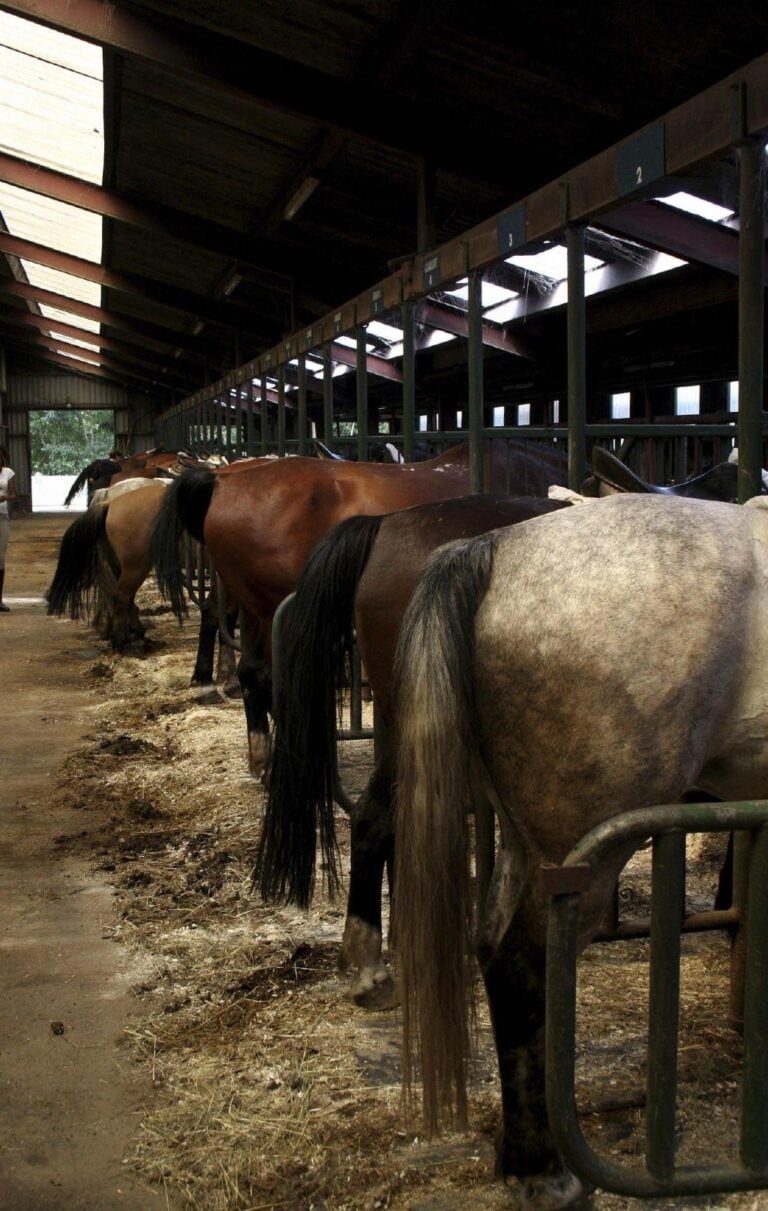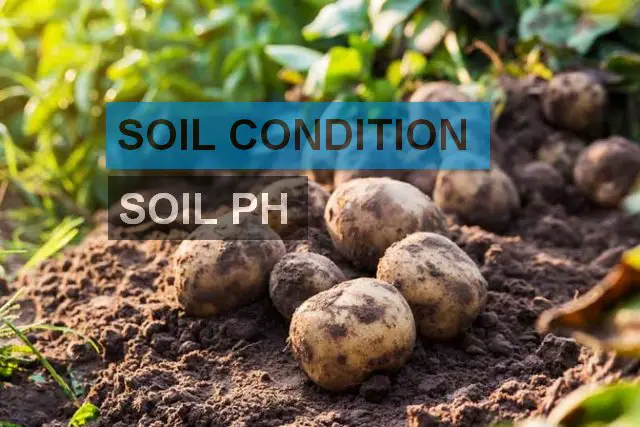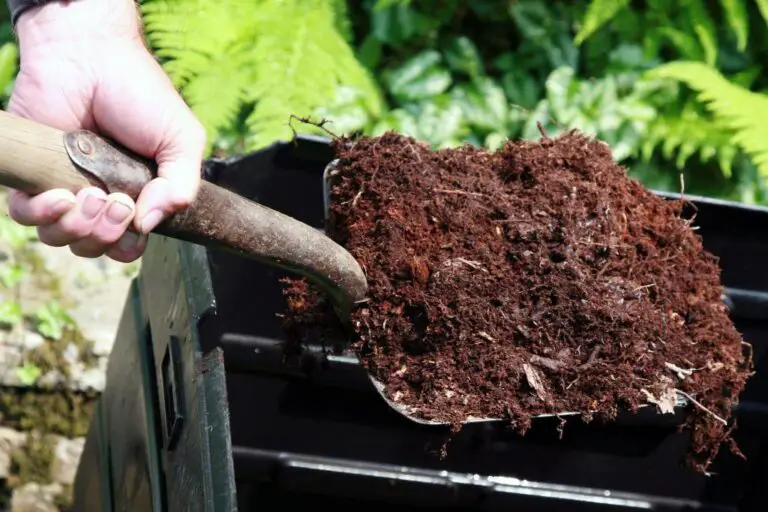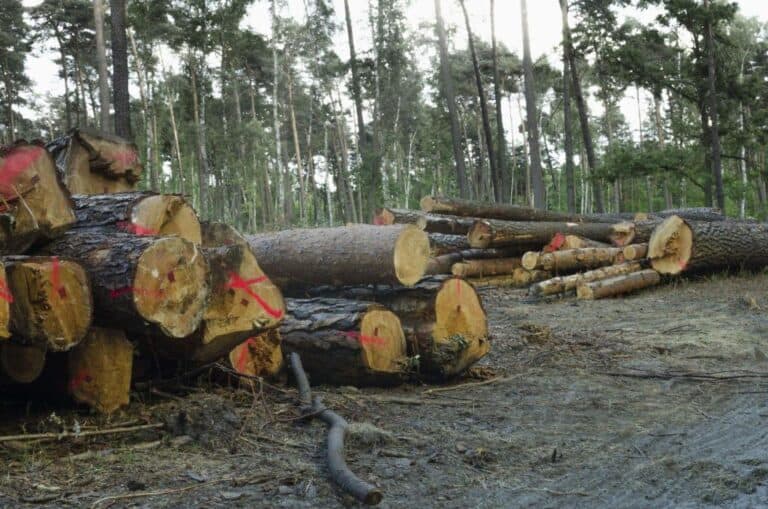How To Sterilize Soil in a Greenhouse and What Techniques To Use?
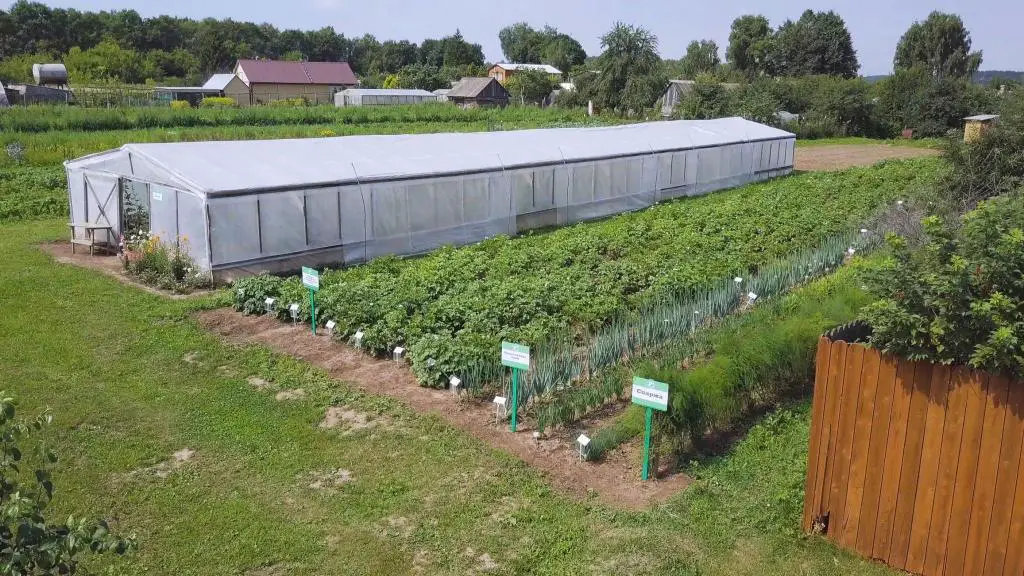
Welcome to the world of greenhouse gardening, where vibrant plants and luscious greens flourish under your care. As you tend to your leafy companions, you may encounter challenges in the form of pesky pests, harmful diseases, and relentless weeds lurking in the soil. But fear not, for we have the solution to keep your garden paradise thriving!
In this article, we will unlock the secrets of soil sterilization, a vital technique to create a sanctuary for your plants to blossom. Together, we will explore a treasure trove of sterilization techniques, from the ancient art of steam sterilization to the modern marvel of microwave treatment.
Get ready to transform your greenhouse into an oasis of growth and vitality, as we delve into the world of soil sterilization and discover the perfect techniques to safeguard your green haven!
Importance of Soil Sterilization
Soil sterilization might not be the first thing that comes to mind when you think of gardening, but its importance cannot be understated. It’s like creating a safe haven for your plants to thrive, free from harmful pests and diseases that could wreak havoc on their growth.
Picture this: you carefully tend to your garden, sowing seeds and nurturing tiny sprouts with care, only to find them wilting away due to unseen pathogens lurking in the soil. By sterilizing the soil, you’re taking a proactive approach to eliminating these potential threats and creating a nurturing environment where your plants can flourish.
There are several effective ways to sterilize soil, each with its own unique benefits. Selecting the right method for your garden’s raised beds is crucial to ensuring optimal results.
Methods of Soil Sterilization
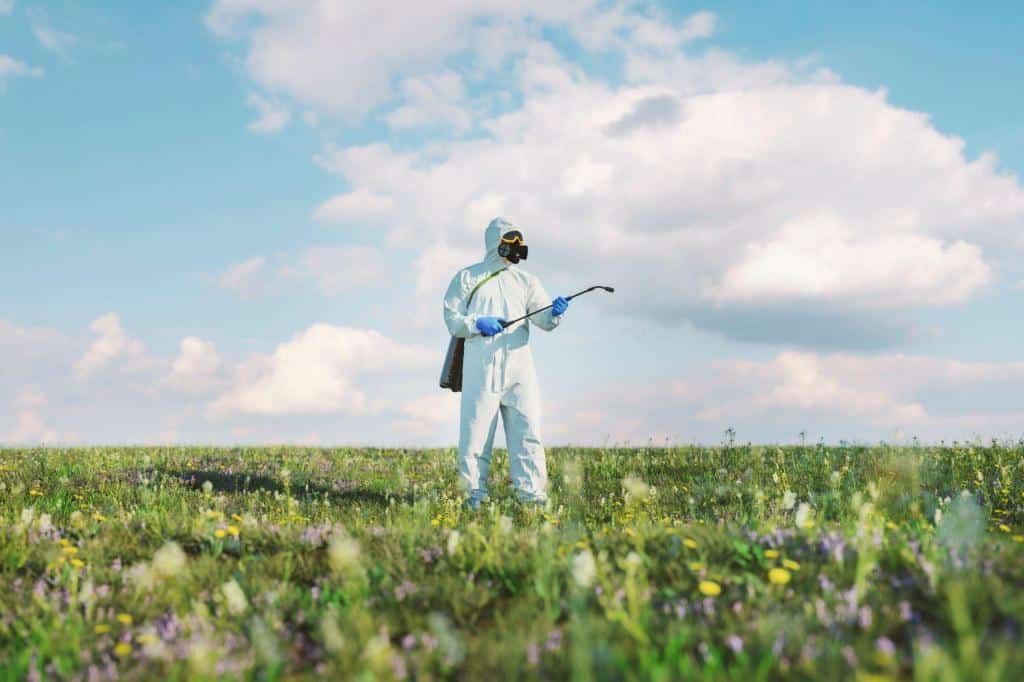
There are several effective methods for soil sterilization, each with its unique approach and advantages. Let’s take a closer look at some of these techniques:
| Method | Process | Effectiveness | Advantages | Drawbacks |
| Steam | Utilizes steam to raise soil temperature and kill pathogens | High | Penetrates deeply, minimal soil nutrient loss | Requires specialized equipment and setup |
| Baking | Bakes soil at high temperatures to eliminate pathogens | Moderate to High | Simple process, accessible method | Potential nutrient loss, longer sterilization time |
| Solarization | Uses solar heat to heat soil and eradicate pathogens | Moderate to High | Environmentally friendly, minimal effort | Weather-dependent, may not work in colder climates |
| Chemicals | Involves chemical agents to disinfect soil | High | Effective against wide range of pathogens | Safety concerns, potential harm to beneficial soil organisms |
Preparation Before Sterilization a Greenhouse
Before diving into the process of sterilizing a greenhouse, make sure you’re well-prepared for this task. Just like a master chef preps ingredients before creating a culinary masterpiece, preparing your greenhouse is essential to achieving successful soil sterilization.
- Clear the Greenhouse: Begin by removing all plants, debris, and unused equipment from the greenhouse. Clearing the area allows for easier access and ensures that no plant is accidentally exposed to the sterilization process.
- Gather Supplies: Next, gather all the necessary supplies for sterilization. This may include a steam generator, transparent or black plastic sheets for solarization, chemical sterilizing agents (if using chemical sterilization), watering cans, spray bottles, and protective gear like gloves and masks.
- Assess Soil Moisture: Check the moisture level of the soil. You need to have slightly damp soil before sterilization, as dry soil may not conduct heat effectively during the process.
- Evaluate Ventilation: Ensure proper ventilation in the greenhouse during and after sterilization. Adequate airflow prevents the buildup of fumes and helps cool down the soil once the process is complete.
By taking these preparatory steps, you set the stage for a smooth and efficient soil sterilization process, leaving your greenhouse primed for planting success. Remember, preparation is key to creating an optimal environment for your plants to thrive and bloom!
How To Sterilize Soil in a Greenhouse and What Techniques To Use
1. Steam Sterilization
Steam sterilization is one of the most effective and environmentally friendly methods for eliminating pests and pathogens from the soil. The high temperature of the steam kills harmful organisms, leaving the soil clean and ready for planting.
To steam sterilize your greenhouse soil, follow these steps:
- Prepare the Soil: Remove any large debris, rocks, or weeds from the soil surface.
- Moisten the Soil: Ensure the soil is adequately moistened, as dry soil may not conduct heat as effectively.
- Use a Steam Generator: Invest in a quality steam generator designed for greenhouse use. Place it in the center of your greenhouse.
- Cover the Soil: Cover the soil with a tarp or plastic sheet to trap the steam and maintain high temperatures.
- Steam the Soil: Turn on the steam generator and let the soil steam for the recommended duration (usually a few hours).
- Monitor the Temperature: Keep an eye on the temperature during the process, as different plants have varying heat tolerance levels.
- Cool Down Period: Allow the soil to cool down before removing the covering.
2. Solarization
Solarization is a natural and chemical-free method that utilizes the sun’s energy to heat the soil, effectively eliminating pests and diseases.
To solarize your greenhouse soil, follow these steps:
- Prepare the Soil: Clear the soil of any debris and weeds.
- Moisten the Soil: Water the soil thoroughly to ensure proper heat conduction.
- Cover the Soil: Cover the soil with a transparent plastic sheet, tucking the edges to seal it.
- Duration: Leave the plastic cover in place for 4 to 6 weeks during the hottest period of the year.
- Monitor Progress: Keep an eye on the temperature and ensure the soil reaches sufficiently high temperatures for effective sterilization.
- Cool Down Period: After the required duration, remove the plastic and let the soil cool before planting.
Ideal Conditions and Duration
The effectiveness of solarization depends on external factors. Optimal conditions include a sunny period during the hottest months, such as summer. A duration of 4-6 weeks is generally recommended for successful sterilization.
Related: Does Solarization of Soil Remove Worms and Nematodes?
3. Chemical Sterilization
Chemical sterilization involves using chemicals to treat the soil and eliminate pests, diseases, and weed seeds. While effective, this method should be used with caution, ensuring the chemicals used are safe for the intended plants and environment.
Before proceeding with chemical sterilization:
- Read and follow the manufacturer’s instructions carefully.
- Wear appropriate protective gear, such as gloves and a mask.
- Ensure proper ventilation in the greenhouse.
Chemical sterilization process:
- Prepare the Soil: Remove any visible debris and weeds.
- Choose the Chemical: Select an appropriate chemical sterilizing agent available at your local gardening store.
- Mix the Solution: Prepare the sterilizing solution following the recommended dilution ratio.
- Apply the Solution: Use a spray bottle or watering can to evenly apply the sterilizing solution over the soil surface.
- Wait and Water: Allow the solution to sit on the soil for the recommended duration. Then, water the soil thoroughly to remove any excess chemicals.
- Monitor the Greenhouse: Keep an eye on the greenhouse’s ventilation to ensure any lingering fumes disperse safely.
Balancing Effectiveness and Sustainability
While chemical sterilization boasts high efficacy, sustainability is a concern. Chemical methods may have long-lasting environmental impacts, necessitating careful consideration. Comparing them against alternative techniques can guide your choice toward balance.
4. Microwave Sterilization
Microwave sterilization is a relatively new technique that is gaining popularity due to its efficiency and convenience, especially for smaller batches of soil.
To sterilize soil using a microwave:
- Fill Microwave-Safe Containers: Fill microwave-safe containers with the soil you want to sterilize, leaving enough headspace for proper heating.
- Moisten the Soil: Sprinkle water over the soil to make it slightly damp.
- Cover the Containers: Loosely cover the containers with microwave-safe lids or plastic wrap to allow steam to escape.
- Microwave in Intervals: Microwave the containers in short intervals, checking the temperature and stirring the soil between each round.
- Cool Down Period: Allow the soil to cool down before using it in the greenhouse.
Signs That Greenhouse Soil Is Contaminated and Needs Sterilization
Detecting soil contamination in your greenhouse is vital to maintaining a healthy and thriving garden. Thankfully, nature gives us clues to identify when soil needs sterilization. Keep a keen eye out for these telltale signs:
1. Stunted Growth: If your plants seem to have hit a growth plateau and aren’t flourishing as expected, it could be due to soil contamination. Toxic substances in the soil hinder nutrient absorption, leading to stunted growth.
2. Yellowing Leaves: Leaves turning yellow, even with proper watering and sunlight, can signal soil contamination. Contaminants disrupt nutrient uptake, causing nutrient deficiencies and discoloration.
3. Pests and Diseases: An increase in pests or recurrent diseases attacking your plants is a strong indicator of contaminated soil. These organisms thrive in an unhealthy soil environment.
4. Weeds Galore: Excessive weed growth, despite regular weeding efforts, indicates soil contamination. Contaminated soil provides a fertile breeding ground for weeds.
5. Unpleasant Odor: Foul odors emanating from the soil can indicate the presence of harmful bacteria or fungi.
6. Poor Drainage: If the soil retains excess water and lacks proper drainage, it may be contaminated, affecting its physical properties.
By recognizing these signs early on, you can take proactive measures and opt for soil sterilization to revive your garden and restore its natural vitality. Keep a vigilant eye on your plants, as they are excellent indicators of the soil’s health!
How Do You Keep Diseases Out of a Greenhouse?
Keeping diseases out of a greenhouse is like building a fortress to protect your precious plants. With a little knowledge and some proactive measures, you can shield your garden paradise from unwanted invaders. Let’s explore some effective strategies to fortify your greenhouse against diseases.
1. Quarantine Zone: Create a quarantine area for new plants before introducing them to the greenhouse. This isolation period allows you to monitor for any signs of disease without risking the entire garden.
2. Sanitation Is Key: Cleanliness is your strongest weapon. Regularly sanitize tools, pots, and equipment to prevent disease transmission.
3. Choose Disease-Resistant Varieties: Opt for disease-resistant plant varieties. They may be your best defense against specific pathogens.
4. Proper Ventilation: Ensure good airflow and ventilation within the greenhouse. Stagnant air can foster disease development.
5. Well-Drained Soil: Use well-draining soil to avoid waterlogged conditions that encourage root rot and other soil-borne diseases.
6. Remove Infected Plants: Promptly remove and dispose of any infected plants. Do not compost them, as it may spread diseases.
7. Integrated Pest Management: Adopt an integrated pest management (IPM) approach to tackle pests that can act as disease vectors.
8. Beneficial Insects: Introduce beneficial insects that prey on plant pests, minimizing the risk of disease transmission.
9. Monitor Regularly: Keep a watchful eye on your plants. Early detection of any disease symptoms allows for quick intervention.
By implementing these protective measures, you’ll build a robust defense against diseases, maintaining a thriving and disease-free greenhouse sanctuary for your plants to flourish. Remember, prevention is better than cure, and a little proactive care can go a long way toward safeguarding your green haven.
Plants in a Greenhouse That Don’t Need Soil Sterilization
In the magical world of greenhouses, some plants are like superheroes of resilience, standing tall and strong even without the need for soil sterilization. These resilient champions have evolved to fend off pests and diseases with their natural defenses, making them perfect candidates for non-sterile soil environments. If you’re curious to know which plants make this elite list, we’ve got you covered!
- Tomatoes: These juicy red gems are known for their hardiness. With their strong root systems and ability to withstand various pests and diseases, tomatoes are often a top choice for greenhouse gardeners.
- Peppers: Whether they’re sweet or spicy, peppers are tough contenders against soil-borne adversaries. Their vibrant colors and delicious flavors are a testament to their resilience.
- Cucumbers: These refreshing green delights thrive in non-sterile soil and reward you with crisp, crunchy goodness. Cucumbers’ resistance to diseases like powdery mildew makes them a popular choice for greenhouse cultivation.
- Basil: The king of herbs, basil, is a superstar that doesn’t mind a bit of friendly competition with soil pathogens. With its aromatic leaves and numerous culinary uses, basil adds a burst of flavor to any dish.
- Chives: These slender green shoots are not only pretty additions to your dishes but also excellent contenders against pests and diseases.
- Mint: Mint’s robust growth and fragrant leaves are a testament to its ability to thrive in various soil conditions.
- Oregano: This versatile herb packs a punch of flavor and is well-equipped to fend off unwanted guests in non-sterile soil environments.
- Thyme: Another culinary hero, thyme, boasts natural defenses that keep it going strong in less-than-sterile soil.
So, if you’re thinking of cultivating these resilient plant superheroes, rejoice! Your greenhouse can be their perfect sanctuary without the need for soil sterilization. These tough greens will flourish, giving you bountiful harvests and a garden full of delicious flavors and fragrant aromas. Happy gardening!
Conclusion
In the realm of greenhouse gardening, soil sterilization emerges as a fundamental practice rather than an optional step. It holds the key to unlocking the full potential of your crops, ensuring they thrive in a disease-free and nutrient-rich environment. When it comes to sterilizing soil in a greenhouse, there are various effective ways to go about it.
One popular method is using heat, which involves subjecting the soil to high temperatures through steam or hot water. This process not only eradicates harmful pathogens and weeds but also enhances the soil’s nutrient availability for the plants to absorb and utilize efficiently. Another appealing aspect of heat sterilization is its eco-friendliness, making it a sustainable choice for greenhouse gardening.
However, for those looking for organic approaches, there are alternative methods available. Solarization is one such technique that capitalizes on the sun’s heat by covering the moist soil with clear plastic, creating a greenhouse effect that effectively eliminates pathogens and pests. Additionally, using compost or organic matter can promote a natural sanitizing effect on the soil, while also enriching it with essential nutrients. Choosing the right approach depends on your specific needs and preferences.
Comparing different soil sterilization techniques allows you to make an informed decision for your greenhouse. While heat sterilization offers quick and reliable results, organic methods may take longer but provide long-term benefits for the soil’s health and sustainability. Solarization, in particular, offers a fascinating insight into its impact on eliminating pathogens, presenting a promising solution for environmentally-conscious gardeners. By exploring these various methods, you can find the perfect fit for your greenhouse gardening endeavors.
In conclusion, soil sterilization is the cornerstone of successful greenhouse gardening. By comprehending its significance, delving into diverse methods, and perfecting your soil preparation techniques, you pave the way for an optimal growing environment. So, roll up your sleeves, select a sterilization method that aligns with your goals, and witness your greenhouse blossom into a haven of vibrant and flourishing vegetation. Your efforts will be rewarded with bountiful harvests and the satisfaction of nurturing a thriving ecosystem within the glass walls of your greenhouse. Happy gardening!
FAQs on Best Practices for Ensuring Sterile Soil in a Greenhouse Environment
What is the best way to sterilize soil in a greenhouse?
The best way to sterilize soil in a greenhouse is through steam sterilization. This method effectively eliminates pests and pathogens while maintaining soil fertility.
Can I reuse sterilized soil in subsequent plantings?
Yes, you can reuse sterilized soil in subsequent plantings. However, it’s essential to monitor for signs of contamination and supplement with fresh soil or amendments as needed.
How often should I sterilize greenhouse soil?
The frequency of greenhouse soil sterilization depends on your specific circumstances. Generally, it’s recommended to sterilize soil before each growing season or whenever contamination is suspected.
Are there natural methods of soil sterilization?
Yes, natural methods of soil sterilization exist, such as solarization, which uses the sun’s heat to kill pests and diseases.
Is soil sterilization necessary for all greenhouse crops?
Soil sterilization is not necessary for all greenhouse crops. Some plants may thrive in non-sterile soil or be more resistant to pests and diseases.
Can I sterilize soil without specialized equipment?
Yes, you can sterilize soil without specialized equipment. Solarization is a simple and effective natural method that requires only plastic sheeting.
How does soil sterilization affect the overall greenhouse ecosystem?
Soil sterilization can disrupt the overall greenhouse ecosystem by affecting beneficial microorganisms. Regular monitoring and soil rejuvenation practices can help maintain a balanced environment.

